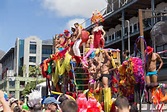The International Dance Festival@Silicon Valley presents the FESTIVAL CONCERT, today, Aug. 16, 3 p.m. It is at the Mountain View Masonic Center, 890 Church St., corner of Church & Franklin, in Mountain View, CA, 94041. Don’t miss the beauty and fun of this concert! Dance styles include: Bharatanatyam, choreographed by Shilpa Torvi; Classical Chinese ribbon dance, choreographed by Ann Woo; Contemporary dance, choreographed by Leslie Friedman; Salsa, choreographed by Leanne Rinelli; Tap choreographed by Audreyanne Covarrubias. Tickets: $15 general/$10 for over 65 or under 10 years of age. $25 sponsor ticket receives preferred seating and includes a $10, tax deductible donation to The Lively Foundation, the not for profit presenter of IDF@SV. Don’t miss this great event!
Author Archives: Leslie

GAVINA COFFEE TASTING & CUBAN SALSA DEMO: FREE!
Don’t miss this! It’s one of the most fun events of the summer. The Festival Preview Day for the International Dance Festival@Silicon Valley, August 9, Mountain View Masonic Center, 890 Church Street, Mountain View. The program:
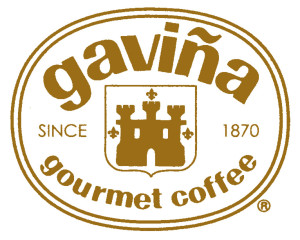
4 p.m. FREE GAVINA COFFEE TASTING! Aromatic & delicious. Do not miss this chance to learn about great coffee and find out why Gavina has been favored by coffee connoisseurs for 4 generations. Gavina Vice President, Lois Coburn, will be there to offer great tasting samples.
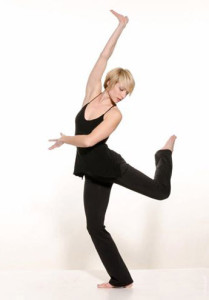 3:15 p.m. FREE SALSA PERFORMANCE led by the fabulous Leanne Rinelli. An amazing dancer, Leanne learned Cuban Salsa in Havana last year. Don’t miss this! It will be beautiful and exciting.
3:15 p.m. FREE SALSA PERFORMANCE led by the fabulous Leanne Rinelli. An amazing dancer, Leanne learned Cuban Salsa in Havana last year. Don’t miss this! It will be beautiful and exciting.
1:30 – 2:45 Cuban Salsa class taught by Leanne Rinelli, no partner or previous experience needed 12 – 1:15 Dunham Technique/Afro-Haitian class taught by Leslie Arbogast for beginners- pros Cost: 1 class for $12.50; both for $20.00 CLASS NOT REQUIRED TO ENJOY THE COFFEE TASTING OR TO WATCH THE SALSA PERFORMANCE!!! See you tomorrow!!!
IDF@SV Class Schedule: It’s here!!
Here’s the link to get you to the post with the complete class & event schedule for the International Dance Festival@Silicon Valley. http://www.livelyfoundation.org/wordpress/?p=833 Remember to log in to http://www.livelyfoundation.org/wordpress/?=cat2 when you are looking for information about IDF@SV. You can find all the articles by looking at the lists of posts, but if you leave off the /?=cat2 you will see whatever the most recent posts are first. Don’t miss this chance to dance. It is ideal for everyone from pros to beginners. DANCE! CREATE! PERFORM! Put your heart back in your art this summer at IDF@SV!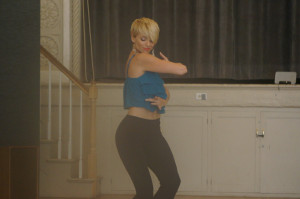 pictures: Leanne Rinelli dances Salsa; Etta Walton leads Line Dances; Audreyanne Covarrubias & Megan Ivey Tap; Leslie Friedman dances in “Come Down, Angels.”
pictures: Leanne Rinelli dances Salsa; Etta Walton leads Line Dances; Audreyanne Covarrubias & Megan Ivey Tap; Leslie Friedman dances in “Come Down, Angels.” 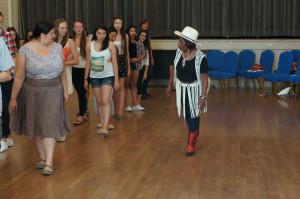
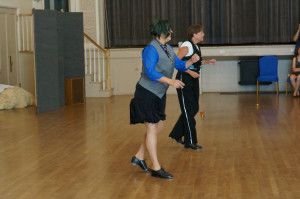
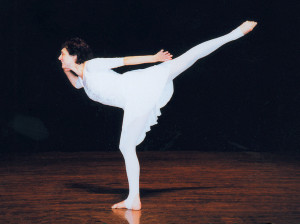
IDF@SV: NEW PRICES FOR FESTIVAL PROGRAMS!
 Great news for everyone who wants to participate in the International Dance Festival@Silicon Valley: Price reductions are happening NOW. Do not hesitate; these deals are too good to pass up. New offerings are (1) for the Festival Preview Day, take one class for $12.50; take TWO for $20. (2) for those wanting to take only two of the M2F© workshops, new price is $180. These are great deals for amazing experiences. The Festival Preview classes can be enjoyed by total beginners who have never tried to dance before AND by experienced, even professional dancers. DO NOT MISS THE FUN! and remember that on August 9, Festival Preview Day, you can watch Leanne Rinelli’s fabulous Salsa Demo Performance for FREE, and you can participate in the Gavina Gourmet Coffee Tasting for FREE whether you take a class or not. Special note to those new to IDF@SV or new to dance: during the week, 8/10-8/14, there are definitely dance experiences which welcome YOU. The Salsa class welcomes non-dancers as well as those who Salsa even in their sleep. Do you have a lot of dance training but not in the kinds of dance being offered? NO PROBLEM. You are welcome in all the classes. Did you dance years ago but have not danced recently. NO PROBLEM. Come back to dance. Try something new and have a great time. Contact livelyfoundation@sbcglobal.net for more news.
Great news for everyone who wants to participate in the International Dance Festival@Silicon Valley: Price reductions are happening NOW. Do not hesitate; these deals are too good to pass up. New offerings are (1) for the Festival Preview Day, take one class for $12.50; take TWO for $20. (2) for those wanting to take only two of the M2F© workshops, new price is $180. These are great deals for amazing experiences. The Festival Preview classes can be enjoyed by total beginners who have never tried to dance before AND by experienced, even professional dancers. DO NOT MISS THE FUN! and remember that on August 9, Festival Preview Day, you can watch Leanne Rinelli’s fabulous Salsa Demo Performance for FREE, and you can participate in the Gavina Gourmet Coffee Tasting for FREE whether you take a class or not. Special note to those new to IDF@SV or new to dance: during the week, 8/10-8/14, there are definitely dance experiences which welcome YOU. The Salsa class welcomes non-dancers as well as those who Salsa even in their sleep. Do you have a lot of dance training but not in the kinds of dance being offered? NO PROBLEM. You are welcome in all the classes. Did you dance years ago but have not danced recently. NO PROBLEM. Come back to dance. Try something new and have a great time. Contact livelyfoundation@sbcglobal.net for more news. 
LIVELY DANCE IN 1ST SILICON VALLEY ARTS SHOWCASE
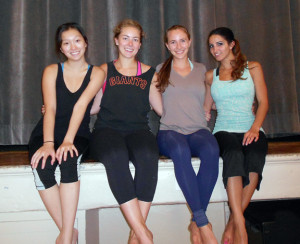
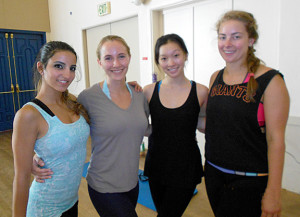 Chinese Performing Arts of America–CPAA–invited The Lively Foundation to present a dance in the 1st Silicon Valley Arts Showcase, July 26, 2-3:30 p.m., at CPAA’s International Performing Arts Center, 6148 Bollinger Road, San Jose. It is an honor and very exciting to be included. Four beautiful dancers will perform Face to Face, a dance choreographed by Leslie Friedman for the Adagio for English Horn & Strings by Mozart. A wonderful group of dancers has been rehearsing the dance every day; now, the performance is about to begin! The program will include both Chinese and Western music and dance. At the same site, there is also an exhibition of painting and calligraphy which opens July 25. Pictures: In rehearsal at the Mountain View Masonic Center, Mountain View, CA, onstage, L to R: Natalie Duong, Katy Walter, Laila Waheed, Leelianna Fezli; standing, L to R: Leelianna Fezli, Laila Waheed, Natalie Duong, Katy Walter.
Chinese Performing Arts of America–CPAA–invited The Lively Foundation to present a dance in the 1st Silicon Valley Arts Showcase, July 26, 2-3:30 p.m., at CPAA’s International Performing Arts Center, 6148 Bollinger Road, San Jose. It is an honor and very exciting to be included. Four beautiful dancers will perform Face to Face, a dance choreographed by Leslie Friedman for the Adagio for English Horn & Strings by Mozart. A wonderful group of dancers has been rehearsing the dance every day; now, the performance is about to begin! The program will include both Chinese and Western music and dance. At the same site, there is also an exhibition of painting and calligraphy which opens July 25. Pictures: In rehearsal at the Mountain View Masonic Center, Mountain View, CA, onstage, L to R: Natalie Duong, Katy Walter, Laila Waheed, Leelianna Fezli; standing, L to R: Leelianna Fezli, Laila Waheed, Natalie Duong, Katy Walter.
IDF@SV Presents FESTIVAL PREVIEW DAY, August 9
 Get a taste of the many flavors of the International Dance Festival@Silicon Valley. Come to the Festival Preview at the Mountain View Masonic Center, 890 Church St, Mtn. View, CA. Events run from noon to whenever the wonderful Gavina Gourmet Coffee company runs out of aromatic, smooth, delicious coffee for their FREE coffee tasting. Coffee Tasting begins promptly at 4 p.m. The Lively Foundation is proud to have Gavina as a Lead Sponsor of IDF@SV 2015.
Get a taste of the many flavors of the International Dance Festival@Silicon Valley. Come to the Festival Preview at the Mountain View Masonic Center, 890 Church St, Mtn. View, CA. Events run from noon to whenever the wonderful Gavina Gourmet Coffee company runs out of aromatic, smooth, delicious coffee for their FREE coffee tasting. Coffee Tasting begins promptly at 4 p.m. The Lively Foundation is proud to have Gavina as a Lead Sponsor of IDF@SV 2015.
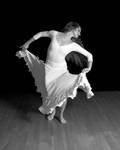 Sample a dance class! Go ahead, just give it a try. You will have so much fun doing it. The Festival Preview offers a drop in class in Dunham Technique (Afro-Haitian) dance, noon-1:15 p.m., taught by Leslie Arbogast, a dancer with national recognition as a leader in Dunham Dance. Mixed levels, beginners-pros welcome. It’s great to find out how many parts of your body can move!
Sample a dance class! Go ahead, just give it a try. You will have so much fun doing it. The Festival Preview offers a drop in class in Dunham Technique (Afro-Haitian) dance, noon-1:15 p.m., taught by Leslie Arbogast, a dancer with national recognition as a leader in Dunham Dance. Mixed levels, beginners-pros welcome. It’s great to find out how many parts of your body can move!
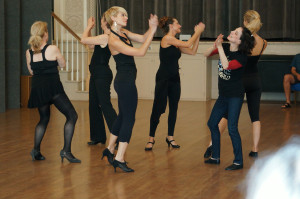 Or, try the Cuban Salsa, 1:30-2:45 p.m., taught by Leanne Rinelli. It’s rhythmic, fun, sensual. No partner is necessary. Any level, beginner and up. Ms Rinelli studied Cuban dance and music in Havana. You will have a blast trying this class.
Or, try the Cuban Salsa, 1:30-2:45 p.m., taught by Leanne Rinelli. It’s rhythmic, fun, sensual. No partner is necessary. Any level, beginner and up. Ms Rinelli studied Cuban dance and music in Havana. You will have a blast trying this class.
 OR, do not take a class at all! You are still welcome to attend the FREE Salsa Demo Performance AND the FREE GAVINA COFFEE TASTING. What a great day! Leanne Rinelli leads the Salsa performance. This is going to inspire you to spend the next 5 days coming to dance class. You will not want to sit still when you feel that rhythm in you. When was the last time you felt so great as you really are? Here’s the schedule for the Festival Preview. Doors open at 11:30 a.m. Dunham class is Noon-1:15 p.m.; Salsa class is 1:30-2:45 p.m.; Salsa Demo begins at 3:15; Gavina Gourmet Coffee Tasting begins at 4 p.m. Come for the whole day or pick your events; a fabulous time is waiting for you! For information: livelyfoundation@sbcglobal.net or call 650/969-4110. Costs for classes: Mention this Livelyblog post get half price; register for the Festival; get half price. Full price: $25/$36.
OR, do not take a class at all! You are still welcome to attend the FREE Salsa Demo Performance AND the FREE GAVINA COFFEE TASTING. What a great day! Leanne Rinelli leads the Salsa performance. This is going to inspire you to spend the next 5 days coming to dance class. You will not want to sit still when you feel that rhythm in you. When was the last time you felt so great as you really are? Here’s the schedule for the Festival Preview. Doors open at 11:30 a.m. Dunham class is Noon-1:15 p.m.; Salsa class is 1:30-2:45 p.m.; Salsa Demo begins at 3:15; Gavina Gourmet Coffee Tasting begins at 4 p.m. Come for the whole day or pick your events; a fabulous time is waiting for you! For information: livelyfoundation@sbcglobal.net or call 650/969-4110. Costs for classes: Mention this Livelyblog post get half price; register for the Festival; get half price. Full price: $25/$36.
IDF@SV 2015: CLASS SCHEDULE
 Here it is: the class schedule for your most wonderful dancing week. Please note: (1) there are differences day to day, especially MWF schedules compared to Tues & Thursday, and (2) there are two venues, our Headquarters at the Mountain View Masonic Center, and the nearby Pacific Ballet Academy, 1095 Wright Ave., Mountain View.
Here it is: the class schedule for your most wonderful dancing week. Please note: (1) there are differences day to day, especially MWF schedules compared to Tues & Thursday, and (2) there are two venues, our Headquarters at the Mountain View Masonic Center, and the nearby Pacific Ballet Academy, 1095 Wright Ave., Mountain View.
MONDAY and WEDNESDAY, August 10 & 12
12:00 – 1:30 Classical Chinese adults & teens Mtn. View Masonic Center 1:30 – 3:00 Contemporary Dance Mtn. View Masonic Center 3:15 – 4:45 Salsa Mtn. View Masonic Center 6:00 – 7:30 Choreo-cubator© Pacific Ballet Academy 7:30 – 9:00 Dunham Technique (Afro-Haitian) Pacific Ballet Academy
TUESDAY, August 11
9:00 am -10:30 Contemporary Dance meets at Mtn. View Masonic Center 10:30 -12:00 Classical Chinese for Adults meets at the Mtn. View Masonic Center 12:00 – 1:30 Classical Chinese for ages 12-14 meets at the Mtn. View Masonic Center 1:30 – 3:00 Dunham Technique meets at the Mtn. View Masonic Center 6:00 – 7:30 Choreo-cubator© meets at Mtn. View Masonic Center 7:30 – 9:00 Salsa meets at Mtn. View Masonic Center
THURSDAY, August 13
9:00 am -10:30 Contemporary Dance meets at Mountain View Masonic Center 10:30 -12:00 Classical Chinese for Adults meets at Mountain View Masonic Center 12:00 – 1:30 Classical Chinese age 12-14 meets at the Mtn. View Masonic Center 1:30 – 3:00 Salsa meets at the Mtn. View Masonic Center 6:00pm – 7:30 Choreo-cubator© meets at Pacific Ballet Academy 7:30 – 9:00 Dunham Technique meets at Pacific Ballet Academy
FRIDAY, August 14
10:30am -12:00 Classical Chinese for Adults meets at Mountain View Masonic Center 12:00 – 1:30 Classical Chinese age 12-14 meets at Mountain View Masonic Center 1:30 – 3:00 Contemporary Dance meets at Mountain View Masonic Center 3:15 – 4:45 Dunham Technique meets at Pacific Ballet Academy 6:00 – 7:15 Choreo-Cubator© meets at Mountain View Masonic Center 7:30 – 9:00 Salsa meets at Mountain View Masonic Center
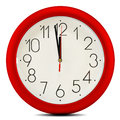 QUESTIONS? CONTACT THE LIVELY FOUNDATION: livelyfoundation@sbcglobal.net
QUESTIONS? CONTACT THE LIVELY FOUNDATION: livelyfoundation@sbcglobal.net

IDF@SV, 2015, Program Fees
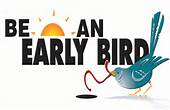 The program fees for IDF@SV are set to make the joys of dancing in the Festival accessible to everyone. Full & partial scholarships are available. Deadline for applications is June 30. Here is a list of fees for all classes and events. Early Bird cut off date is July 10, 2015, in all categories. For more information please email livelyfoundation@sbcglobal.net or call 650/969-4110.
The program fees for IDF@SV are set to make the joys of dancing in the Festival accessible to everyone. Full & partial scholarships are available. Deadline for applications is June 30. Here is a list of fees for all classes and events. Early Bird cut off date is July 10, 2015, in all categories. For more information please email livelyfoundation@sbcglobal.net or call 650/969-4110.
 For all M2F© workshops, 8/10-8/14: Early Bird: $304; Regular: $354 (to Aug. 3); After Aug. 3: $379
For all M2F© workshops, 8/10-8/14: Early Bird: $304; Regular: $354 (to Aug. 3); After Aug. 3: $379
Full Day of Dance©, 8/15, Prices per class reduce with each added class:
Early Bird: $20 single class/$36 for 2/$48 for 3/$56 for 4/$60 for 5/$72 for 6/$72 for 7 — Regular fee: $25 single class/$40 for 2/$54 for 3/$64 for 4/$75 for 5/$78 for 6/$77 for 7
Part-time enrollment: Single M2F© workshop: $134; Two M2F© workshops: $265.50 Please note that Part-time enrollees are not eligible for scholarships or for Early Bird or other discounts.
Festival Preview, 8/9, offers a Dunham Technique (Afro-Haitian) class and a Salsa Class. Single Class is $25; both classes for $36. For dancers taking all the M2F© workshops either class is $12.50, take both for $25.
Festival Concert, 8/16, General Admission: $15; Over 65 & under 10: $10; Sponsor ticket: $25 guarantees best seats and includes a $10 tax deductible donation.
 Payment may be made by check made out to The Lively Foundation and mailed to The Lively Foundation/550 Mountain View Avenue/Mountain View, CA 94041//Walk-ins for Festival Preview or Full Day of Dance© may pay with cash, check or credit card. To pay in advance by credit card: Please go to Lively’s website at www.livelyfoundation.org//on the home page look for Donations in the list of pages above the title “The Lively Foundation”/on the right hand side of the Donations page there is a paypal logo/please follow the directions for DONATIONS on the paypal page so that they will not deduct their service charge. THANK YOU!!!
Payment may be made by check made out to The Lively Foundation and mailed to The Lively Foundation/550 Mountain View Avenue/Mountain View, CA 94041//Walk-ins for Festival Preview or Full Day of Dance© may pay with cash, check or credit card. To pay in advance by credit card: Please go to Lively’s website at www.livelyfoundation.org//on the home page look for Donations in the list of pages above the title “The Lively Foundation”/on the right hand side of the Donations page there is a paypal logo/please follow the directions for DONATIONS on the paypal page so that they will not deduct their service charge. THANK YOU!!!
BAY AREA UPDATE: ART, MUSIC, BASEBALL, PRIDE
This is it, the weekend of the perfect storm of San Francisco Bay Area events. It is a harmonic convergence of absolutely everything. The 45th Annual Pride Parade will be the biggest ever, well over 100, 000 people will crowd into the narrow streets of San Francisco to party and parade. The arts of music, personal adornment, and social action will be represented. The party at the end of the parade, around 5 p.m., occupies Civic Center.
 Both the San Francisco Giants and the Oakland A’s are playing home games. The Giants’ game is at 4:05 p.m. The Pride Parade will have moved past the stadium by then.
Both the San Francisco Giants and the Oakland A’s are playing home games. The Giants’ game is at 4:05 p.m. The Pride Parade will have moved past the stadium by then.
 In Golden Gate Park: The Turner exhibition is up at the de Young Museum, Alice Radio’s Summerthing brings live music and food trucks from 12-4, the Dunsmuir dance company offers Scottish music and dance from 1 -2:45 (free), and all the usual attractions from the Japanese Tea Garden to the Bison are there for you.
In Golden Gate Park: The Turner exhibition is up at the de Young Museum, Alice Radio’s Summerthing brings live music and food trucks from 12-4, the Dunsmuir dance company offers Scottish music and dance from 1 -2:45 (free), and all the usual attractions from the Japanese Tea Garden to the Bison are there for you.
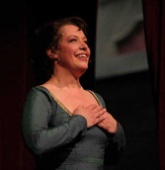
The San Francisco Symphony’s Beethoven Festival offers its final performance of Beethoven’s opera Fidelio with an all-star cast including Nina Stemme in the title role and Alan Held. It will be an inspiring performance. With liberty and fidelity as its noble themes, this opera is more than worth whatever transportation challenges you think you might face. It begins at 7:30 p.m. You will have the treat of mingling with the revelers near by. Celebrate Liberty and Fidelity! Pictured here: Opera star Nina Stemme.
Navia Natarajan: Bharatanatyam Takes the Stage
 It was a pleasure to see Tradition and Transcendence, the Bharatanatyam concert presented by Sangam Arts, June 22, Palo Alto. The featured artist, Navia Natarajan has so much to offer the dance form in which she excels. A classical Indian dance concert of the Bharatanatyam style follows a certain program form which allows dance followers to compare achievements in rhythm, expression, and grace. Ms Natarajan departed a bit from the usual format by inviting young dancers from four classical Indian styles to open the concert.** All of these were “pure dance,” “Nrittanjali,” which in this case means that the focus was on rhythm and the execution of treasured movements rather than on the telling of a story. The traditional opening number, the Pushpanjali, was performed by Kuchipudi exponents being trained by their Guru Madhuri Kishore; next was Nritta, performed by the Kathak students of Guru Sayali Goswami; Jatiswaram, a Bharatanatyam selection was performed by students whose Guru is Ms Natarajan; the Megh Pallavi was an Odissi selection danced by the students of Guru Ratikant Mohapatra. The closing piece was Euphoria, including all four dance styles. The choreography was by Gurus Niharika Mohanty, Madhuri Kishore, Sayali Goswami, Navia Natarajan. This was a happy way to see that Indian cultural riches are carried into new generations and secure in new homes in California. Congratulations to the Gurus and Sangam Arts for this inventive presentation.
It was a pleasure to see Tradition and Transcendence, the Bharatanatyam concert presented by Sangam Arts, June 22, Palo Alto. The featured artist, Navia Natarajan has so much to offer the dance form in which she excels. A classical Indian dance concert of the Bharatanatyam style follows a certain program form which allows dance followers to compare achievements in rhythm, expression, and grace. Ms Natarajan departed a bit from the usual format by inviting young dancers from four classical Indian styles to open the concert.** All of these were “pure dance,” “Nrittanjali,” which in this case means that the focus was on rhythm and the execution of treasured movements rather than on the telling of a story. The traditional opening number, the Pushpanjali, was performed by Kuchipudi exponents being trained by their Guru Madhuri Kishore; next was Nritta, performed by the Kathak students of Guru Sayali Goswami; Jatiswaram, a Bharatanatyam selection was performed by students whose Guru is Ms Natarajan; the Megh Pallavi was an Odissi selection danced by the students of Guru Ratikant Mohapatra. The closing piece was Euphoria, including all four dance styles. The choreography was by Gurus Niharika Mohanty, Madhuri Kishore, Sayali Goswami, Navia Natarajan. This was a happy way to see that Indian cultural riches are carried into new generations and secure in new homes in California. Congratulations to the Gurus and Sangam Arts for this inventive presentation.
 The heart of a Bharatanatyam performance is in the Varnam, a long dance which tells a story, usually a devotional story. Ms Natarajan selected Swami Naan Undhan Adimai. It shows a young girl who grows into a woman whose passion is for Lord Shiva. She seeks to be united with him. While the narrative is touching and related beautifully by Ms Natarajan’s movement and expression, the lasting impression for this viewer was the way she opened up her movement to take on the stage space. With its ancient origins in temple sculptures, classical Indian dance traditionally could be done effectively and beautifully in a small space. In Western classical dances, one is taught that movement through space is the dance more than the pose of even a perfectly balanced arabesque. Navia Natarajan seems to have challenged herself to open up the traditional movement. She has all the qualities of an excellent Bharatanatyam dancer, and she also jumps. Jumping across the stage; now that is something different.The transcendence in her program’s title is the goal of the dance performance. The dancer’s performance should relate to the mind and heart of the onlooker who will be lifted up out of time and space through the dance. It is a big goal, but why not go for transcendence? Dancing is not an idle pass time. All this work is about something. In the audience, this Hedgehog heard impressed onlookers comment on Ms Natarajan’s great energy. Yes, and it is energy with a direction. The transcendence here was also about literally transcending the stage. She is working toward choreographic innovations. Her Amarushataka was an expressive piece set to 7th century poet Amaru’s lyrical work on the mutability of love. The closing work, Agni, reflected three aspects of fire. It matched nritta, pure dance, with profound expression and abstraction with personal feelings. There is tension between Navia Natarajan’s movement exploration and fidelity to classical forms. The tension served to produce drama and passion; all of which drives the dance into the heart, which is exactly where she wants it to go.
The heart of a Bharatanatyam performance is in the Varnam, a long dance which tells a story, usually a devotional story. Ms Natarajan selected Swami Naan Undhan Adimai. It shows a young girl who grows into a woman whose passion is for Lord Shiva. She seeks to be united with him. While the narrative is touching and related beautifully by Ms Natarajan’s movement and expression, the lasting impression for this viewer was the way she opened up her movement to take on the stage space. With its ancient origins in temple sculptures, classical Indian dance traditionally could be done effectively and beautifully in a small space. In Western classical dances, one is taught that movement through space is the dance more than the pose of even a perfectly balanced arabesque. Navia Natarajan seems to have challenged herself to open up the traditional movement. She has all the qualities of an excellent Bharatanatyam dancer, and she also jumps. Jumping across the stage; now that is something different.The transcendence in her program’s title is the goal of the dance performance. The dancer’s performance should relate to the mind and heart of the onlooker who will be lifted up out of time and space through the dance. It is a big goal, but why not go for transcendence? Dancing is not an idle pass time. All this work is about something. In the audience, this Hedgehog heard impressed onlookers comment on Ms Natarajan’s great energy. Yes, and it is energy with a direction. The transcendence here was also about literally transcending the stage. She is working toward choreographic innovations. Her Amarushataka was an expressive piece set to 7th century poet Amaru’s lyrical work on the mutability of love. The closing work, Agni, reflected three aspects of fire. It matched nritta, pure dance, with profound expression and abstraction with personal feelings. There is tension between Navia Natarajan’s movement exploration and fidelity to classical forms. The tension served to produce drama and passion; all of which drives the dance into the heart, which is exactly where she wants it to go.
**Dancers in the Opening Act – Nrittanjali, Pushpanjali(Kuchipudi), Sravya Cherukuri, Anusha Mannava; Nritta(Kathak), Preet Bhatt, Arshia Gupta, Anupreet Parmer, Anika Bhatnagar, Tanya Goel; Jatiswaram (Bharatanatyam), Divya Shridar, Meera Suresh, Urmila Vudali; Megh Pallavi (Odissi), Akhil Joondeph, Maya Lochana Devalcheruvu;
Pictures: Navia Natarajan
